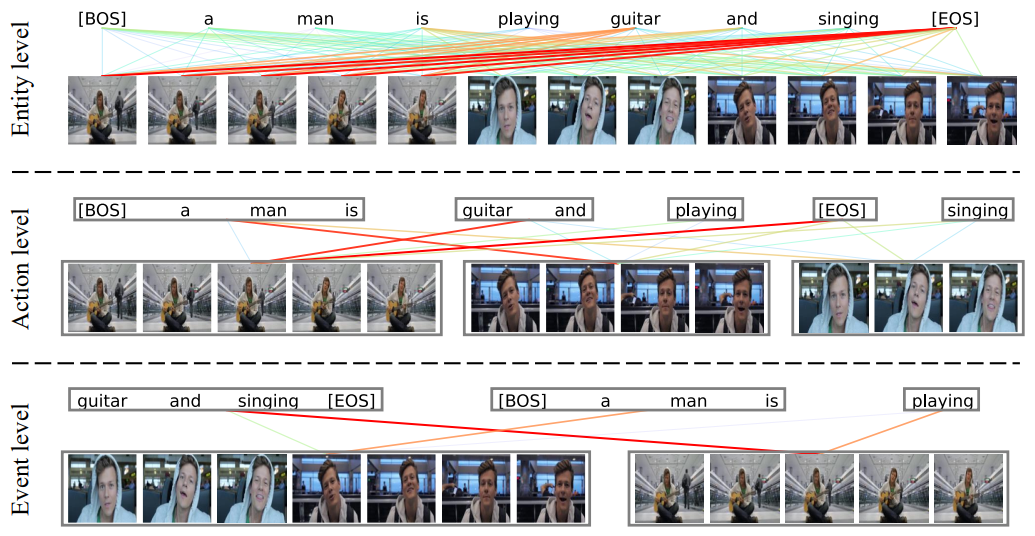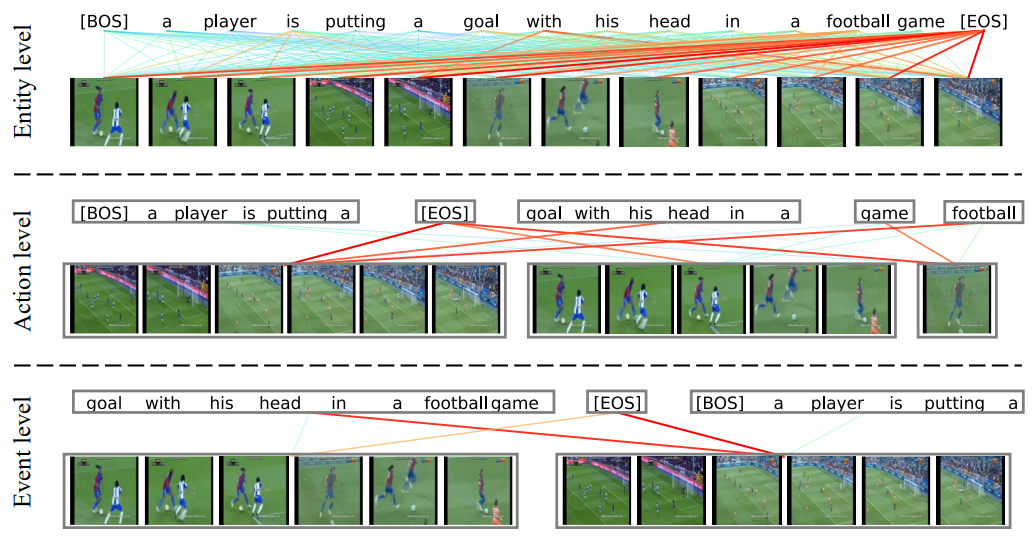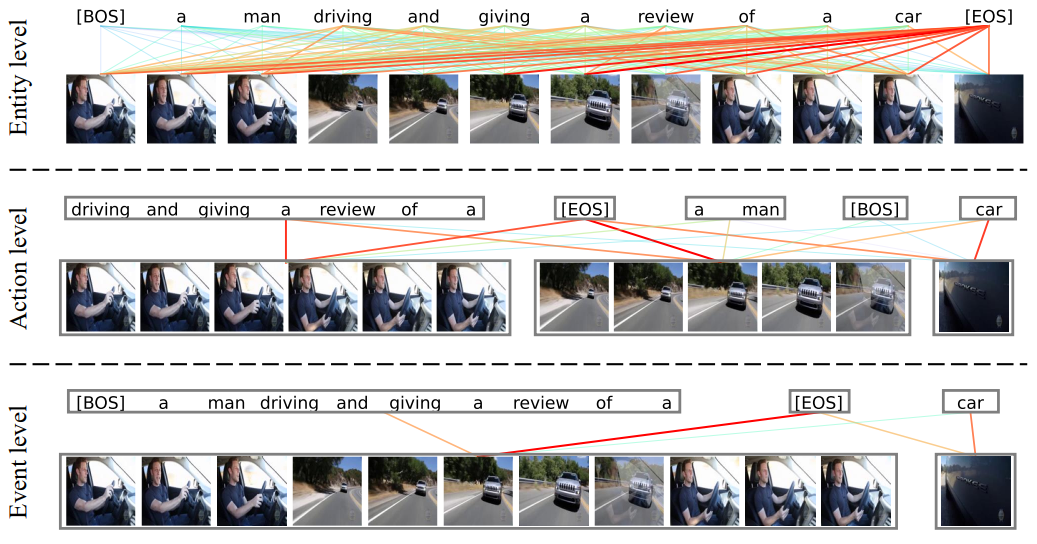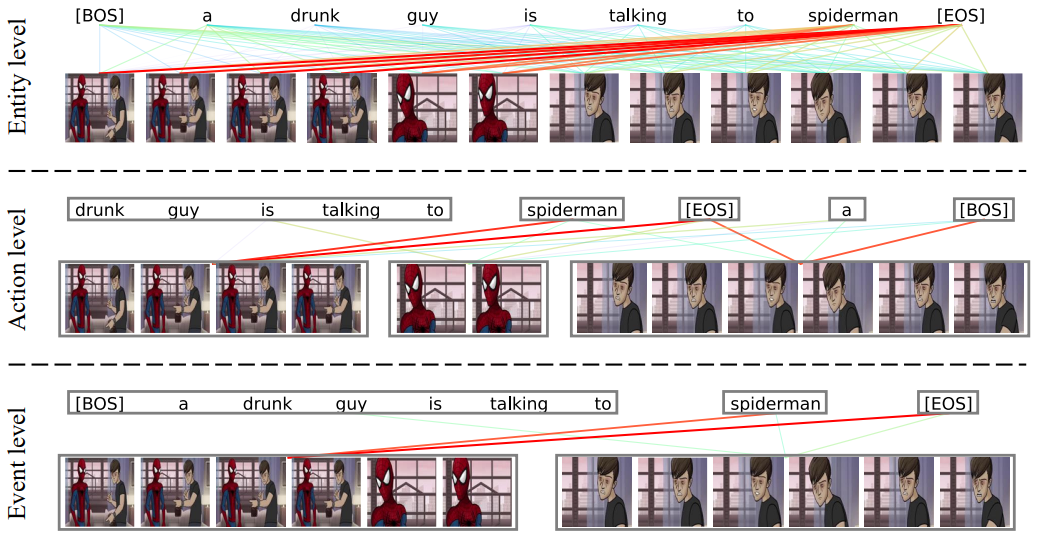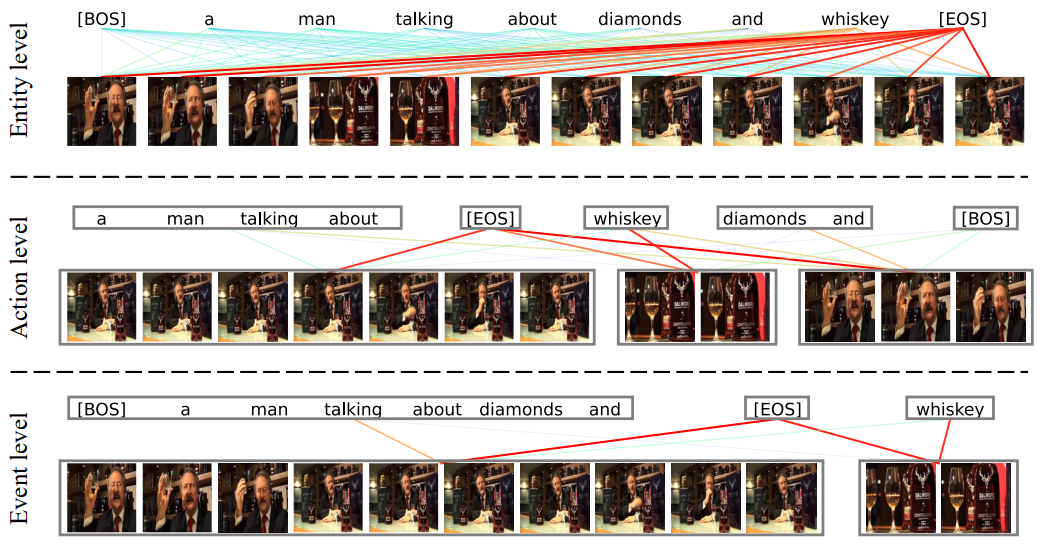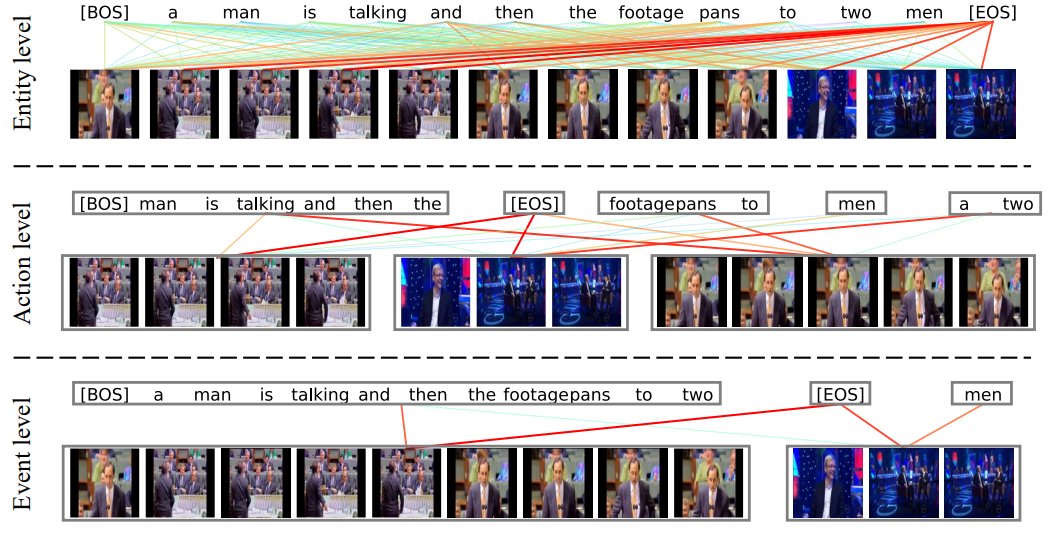Abstract
Contrastive learning-based video-language representation learning approaches, e.g., CLIP, have achieved outstanding performance, which pursue semantic interaction upon pre-defined video-text pairs. To clarify this coarse-grained global interaction and move a step further, we have to encounter challenging shell-breaking interactions for fine-grained cross-modal learning. In this paper, we creatively model video-text as game players with multivariate cooperative game theory to wisely handle the uncertainty during fine-grained semantic interaction with diverse granularity, flexible combination, and vague intensity. Concretely, we propose Hierarchical Banzhaf Interaction (HBI) to value possible correspondence between video frames and text words for sensitive and explainable cross-modal contrast. To efficiently realize the cooperative game of multiple video frames and multiple text words, the proposed method clusters the original video frames (text words) and computes the Banzhaf Interaction between the merged tokens. By stacking token merge modules, we achieve cooperative games at different semantic levels. Extensive experiments on commonly used text-video retrieval and video-question answering benchmarks with superior performances justify the efficacy of our HBI. More encouragingly, it can also serve as a visualization tool to promote the understanding of cross-modal interaction, which have a far-reaching impact on the community.

